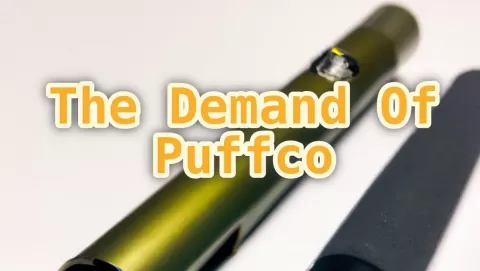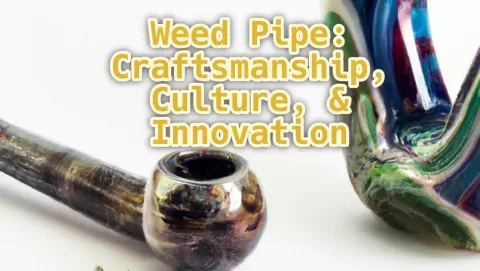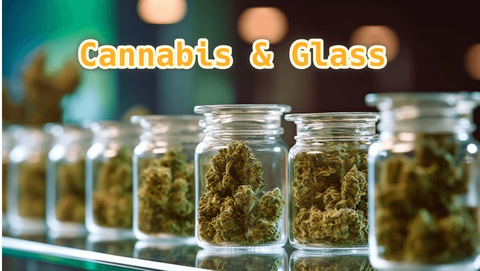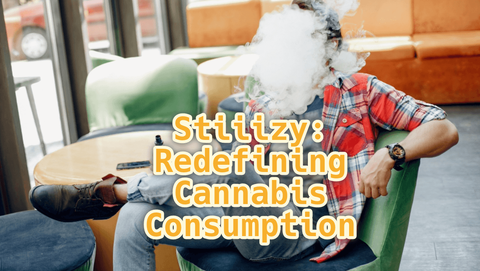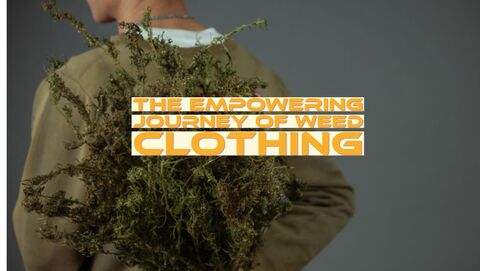Latest Blog Posts
Top rated
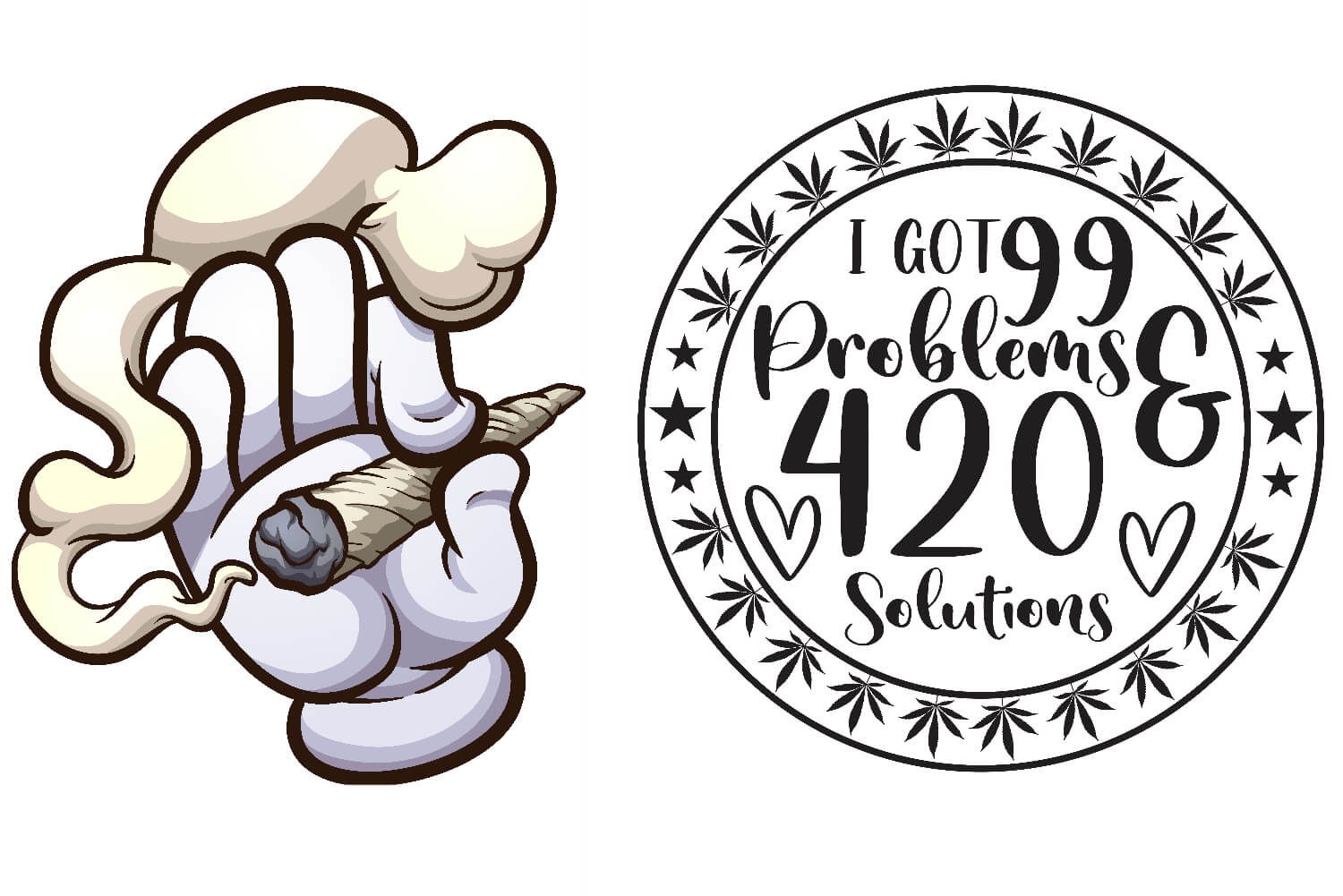
What Is 420 Friendly?
The cultural perception of cannabis has seen a remarkable transformation in recent years. In numerous parts of the world, a substance once regarded as taboo is now becoming increasingly acceptable and even admired. The word "420 friendly," which has arisen as a method to communicate acceptance of cannabis usage and culture, has emerged as an essential component of this cultural shift. This term is a vital component since it has emerged as a way of demonstrating acceptance.
The history of the term "420" remains in mystery, but it is generally accepted that it originated in the 1970s in the state of California as a slang term among high school students for smoking marijuana after school at 4:20 pm. Since then, the phrase has developed into one well-recognized among cannabis fans.
The question is, what exactly does it mean to be 420-friendly? Being accepting of other people's choices to use cannabis means keeping an open mind and not passing judgment on those who do so. It can apply to people who personally use cannabis as well as those who are tolerant of other people's decisions to do the same. It may also apply to establishments, such as companies or event places, that are accepting of people who use cannabis and create an environment that is favorable to the act of smoking it.
In this article, you will dive into the relevance of being 420-friendly to culture as well as the meaning behind the term itself. You are also going to look into the background of the name "cannabis," the development of cannabis culture, as well as the social and legal implications of using cannabis. Thus, you'll investigate this fascinating aspect of today's culture that is constantly evolving in new directions.
What Is 420 Friendly? Where Did It Come From?
Although the history of 420 and what it means to be 420-friendly are shrouded in mystery and myth, a few popular theories attempt to explain where these concepts came from. One of the stories that has gained the most notoriety is the one about the gang of high school kids who created the term "420" in the 1970s in San Rafael, California.
The meaning of "420 friendly" has expanded far beyond its origins as a slang term for people who use cannabis. It has evolved into a cultural phenomenon that may be found in music, films, and other forms of popular culture. Many people show that they are a part of the cannabis culture by putting stickers on their automobiles or wearing clothing with 420 emblems on it.
Cannabis tourism has grown increasingly popular as a means for people to learn about a variety of cannabis strains and make connections with other people who share their interest in the drug. A growing number of cities and states have begun to embrace the 420 culture by organizing festivals and other events with a focus on cannabis. There are also dating applications and social networks geared solely toward those interested in cannabis.
Supporting Safe, Legal, Medical Cannabis
Consuming cannabis for recreational purposes is not the only requirement for 420-friendly behavior. A large number of people use cannabis to treat a variety of medical problems, including persistent pain, anxiety, and others. It also has medicinal use. For them, being 420-friendly means showing support for the availability of cannabis that is both safe and legal for medical use.
Effectively, the idea of being 420-friendly has strong ties to the tradition and culture of cannabis. For its existence, it has developed into more than merely a code word for the consumption of cannabis.
Being "420 friendly" is a means of embracing the changing attitudes towards cannabis, which was long considered a banned substance. Being 420-friendly means having a positive attitude toward the cannabis culture and its use and an accepting and open mind. This is true whether you use cannabis yourself or support those who do.
Common Uses And Meaning Of 420 Friendly
The term 420 friendly is commonly used to indicate that an individual, establishment, or event is accepting of cannabis use. This can refer to a wide range of activities, from merely tolerating the consumption of cannabis on the premises to actively promoting and celebrating cannabis culture. Marijuana culture is nowadays very open and many individuals consume cannabis products together in many social gatherings.
Being "420 friendly" is a method for many people to show their support for the legalization and normalization of cannabis use. It expresses that "I'm comfortable with my smoked weed and cannabis use in general, and I believe it should be treated like any other legal substance."
The most prominent usage of the term "420 friendly" is in connection with various social occasions. If you are invited to a party or event that is described as "420-friendly," it is reasonable to assume that the consumption of cannabis will be accepted if not actively encouraged.
This may involve smoking, vaping, or taking edibles, depending on the nature of the event and the location. The term "420 friendly" is used at various cannabis-themed events, including music festivals and business conferences, to signify that the consumption of cannabis is permitted.
Being 420-friendly, on the other hand, is not restricted to just social activities. It is also a term that can be used to characterize companies and organizations that are open to the culture surrounding cannabis. This can include dispensaries, delivery services, and other companies catering to the community of people who use cannabis.
To these companies, being "420 friendly" does not simply mean tolerating the use of cannabis; rather, it means that they actively promote and support cannabis use. This may involve funding cannabis-related events, providing knowledge about various strains and products, and pushing for the legalization of cannabis.
What States Are 420 Friendly?
In the United States, the laws regarding the legality of cannabis are pretty inconsistent from one state to the next. While some states have approved cannabis for medical and recreational use, others continue enforcing stringent prohibitions against the drug. As a result, the topic of whether states are 420-friendly is a complex one that necessitates an examination of the particular laws and restrictions that exist in each state.
At the moment, there are 18 states and the District of Columbia that have made the consumption of cannabis for recreational purposes legal. This makes these states the most 420-friendly in the country. This group of states includes Alaska, Arizona, California, Colorado, Connecticut, Illinois, Maine, Massachusetts, Michigan, Montana, Nevada, New Jersey, New Mexico, New York, Oregon, Vermont, Virginia, and Washington.
It is legal for adults over 21 in these states to possess and use cannabis in private settings, and in many cases, they can buy it from licensed dispensaries.
In addition to the states listed above, 36 states and the District of Columbia have approved the use of cannabis for medical purposes, making the total number of 420-friendly states 37.
These states have a wide range of rules addressing who is allowed to use medicinal cannabis, how much they are allowed to possess, and how they can get their hands on the drug. In spite of this, medicinal cannabis users in these states are generally permitted to have and partake in cannabis use for the purposes of their treatment.
Regulations In Each State That Should Be Taken Into Account
It is essential to keep in mind that even in states where the consumption of cannabis is legal, there are frequently regulations in place that restrict where and how it can be done. For instance, it is against the law in numerous places to smoke cannabis in public areas, and several states outlaw the consumption of edibles and other forms of cannabis completely.
Thus, you should be careful about where to smoke marijuana. Do states legalize cannabis? Not all of them. Consequently, in some places you can smoke pot, in other places you don't have a right to do so. A person who consumes cannabis where it's not allowed by law, will receive a massive penalty.
Additionally, under federal law, cannabis is still prohibited, making things more difficult for cannabis businesses and users in states that have legalized the drug under 420-friendly policies.
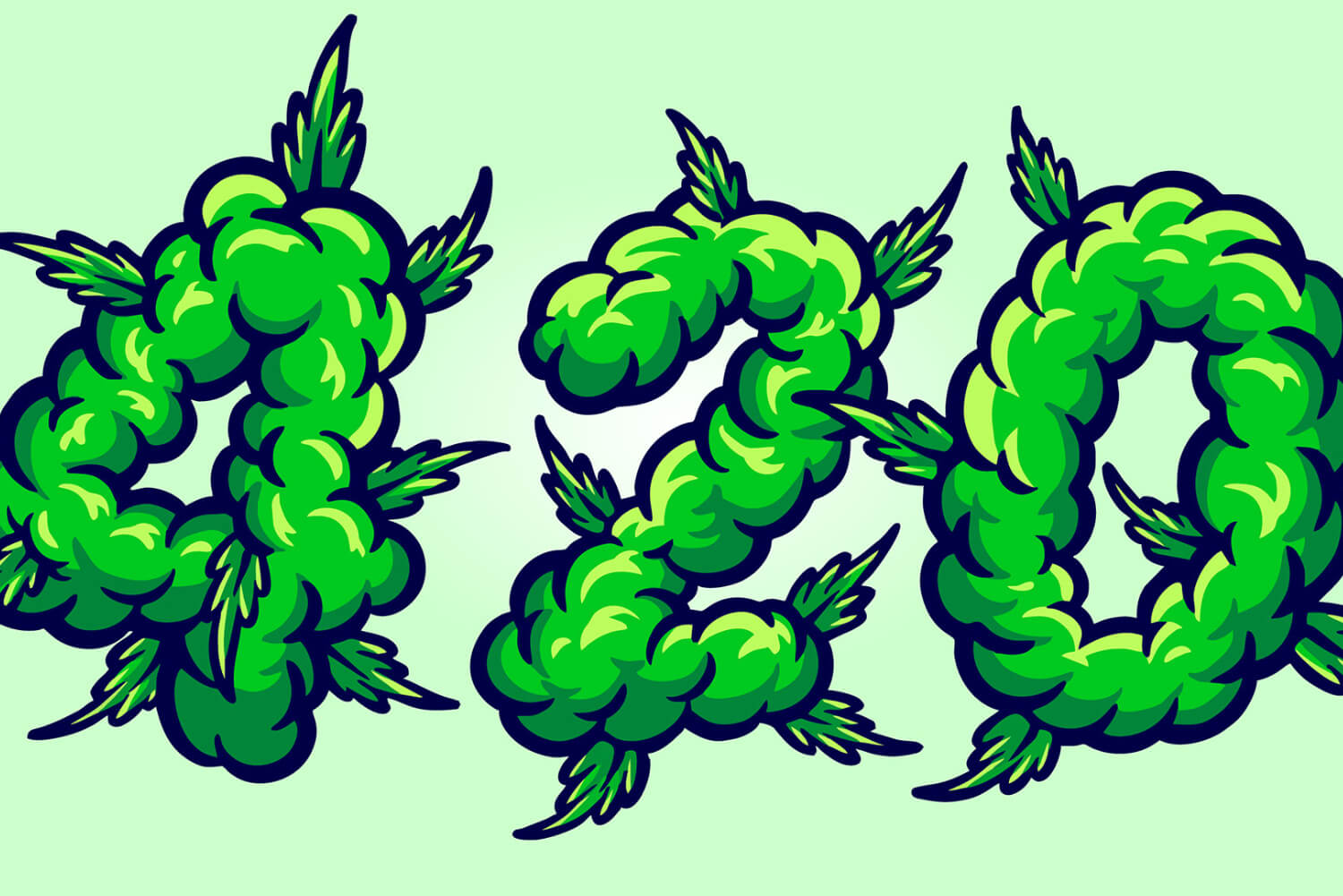
The subject of determining which states are 420-friendly is a complicated one that requires an investigation of the particular laws and regulations that govern each state. At this time, there are 18 states, and the District of Columbia that have made cannabis use legal for recreational purposes, and there are 36 states and the District of Columbia that have made cannabis use lawful for medical purposes. Thus, you can freely consume cannabis with those states with recreational marijuana laws mentioned above.
However, it is essential to remember that even in these cannabis-friendly states, there may be restrictions on where and how cannabis can be consumed, as cannabis is still considered illegal at the federal level.
Overview Of The Use And Cultural Development Of Cannabis
Cannabis has an extensive and distinguished history of use and cultural significance, extending back thousands of years and across various cultures. As early as 4000 BCE, people in ancient China were using cannabis for therapeutic purposes, which is the first instance of cannabis use that humans are aware of. Cannabis then made its way to other parts of Asia, the Middle East, Europe, and the Americas after initially reaching its origins in Asia.
Cannabis has been put to use throughout history for a wide range of functions, including those associated with medicine, spirituality, recreation, and even industry. Cannabis, for example, was regarded as a sacred plant in ancient India and was utilized in religious ceremonies and for meditation during that time.
Cannabis was utilized both as a pain reliever and a treatment for inflammation in ancient Greek medicine. In addition, cannabis was widely used as a therapeutic herb in the United States during the 19th and early 20th centuries before it was made illegal in the 1930s.
The Counterculture That Gave Rise To The Cannabis Subculture
The counterculture that gave rise to the cannabis subculture flourished in the 1960s and 1970s.
Cannabis culture continues to develop and expand in the modern era, with increasing advocates calling for the drug to be decriminalized and accepted in society. Today, millions of individuals all over the world use cannabis for a number of reasons, including medical, recreational, and relaxing uses.
It has also developed into a significant industry, with projections indicating that annual sales of cannabis produced legally in the United States will exceed $45 billion by the year 2025.
Cannabis remains a divisive and frequently underestimated plant, although it has a lengthy history and is used extensively. Others continue to see it as a risky substance, despite many people being aware of its positive effects and supporting its legalization.
To have a complete appreciation for the role that cannabis plays in today's society, it is necessary to have a solid understanding of both its historical background and the cultural impact that it has had throughout the ages.
The Role Of Cannabis In Music And Art
Cannabis has had a profound impact on the fields of music and art; numerous creative people, including musicians and artists, have pointed to its use as a source of inspiration and creativity. Cannabis has been linked to a wide variety of musical styles, ranging from jazz to rock to hip-hop, and evidence of its influence can be found in a wide variety of musical elements, including album artwork and song lyrics.
The jazz scene of the 1930s and 1940s is often considered to be one of the most well-known examples of cannabis's impact on music. It was common practice for many jazz artists, such as Louis Armstrong and Duke Ellington, to use cannabis in the hours leading up to their performances.
Cannabis has also had a considerable impact on the field of visual art because a significant number of creative people have turned to the drug to unleash their imagination and try out new ideas. For instance, the surrealist painter Salvador Dali was known for using cannabis as a tool to assist him in visualizing the paintings he was creating. Other artists, such as Keith Haring and Jean-Michel Basquiat, were open about their cannabis usage and integrated images of the drug into their work.
In recent years, cannabis has continued to play a part in the world of art and music, with many current musicians and artists adding imagery and ideas related to cannabis into their work. Some people have even used the drug as a medium for their work by making pieces using cannabis leaves or other components of the plant. This practice is known as cannabinoid art.
Cannabis has been the focus of debate in the realms of music and art, even though marijuana is commonly associated with creativity and the manifestation of artistic expression. As a result of their involvement with the drug, many artists and musicians have been the subject of censorship or legal issues. Additionally, the usage of the substance has been blamed for contributing to the downfall of several prominent musicians.
The Emergence Of Cannabis-Themed Fashion And Accessories
The increasing acceptance of cannabis use in recent years has resulted in the birth of a new trend in the world of fashion: cannabis-themed clothes and accessories. Everything from shirts and caps to jewelry and purses features a striking design that draws inspiration from cannabis culture.
The hippie culture of the 1960s and 1970s is often cited as an early example of clothing with a cannabis motif. At this time, neckties were a standard fashion accessory.
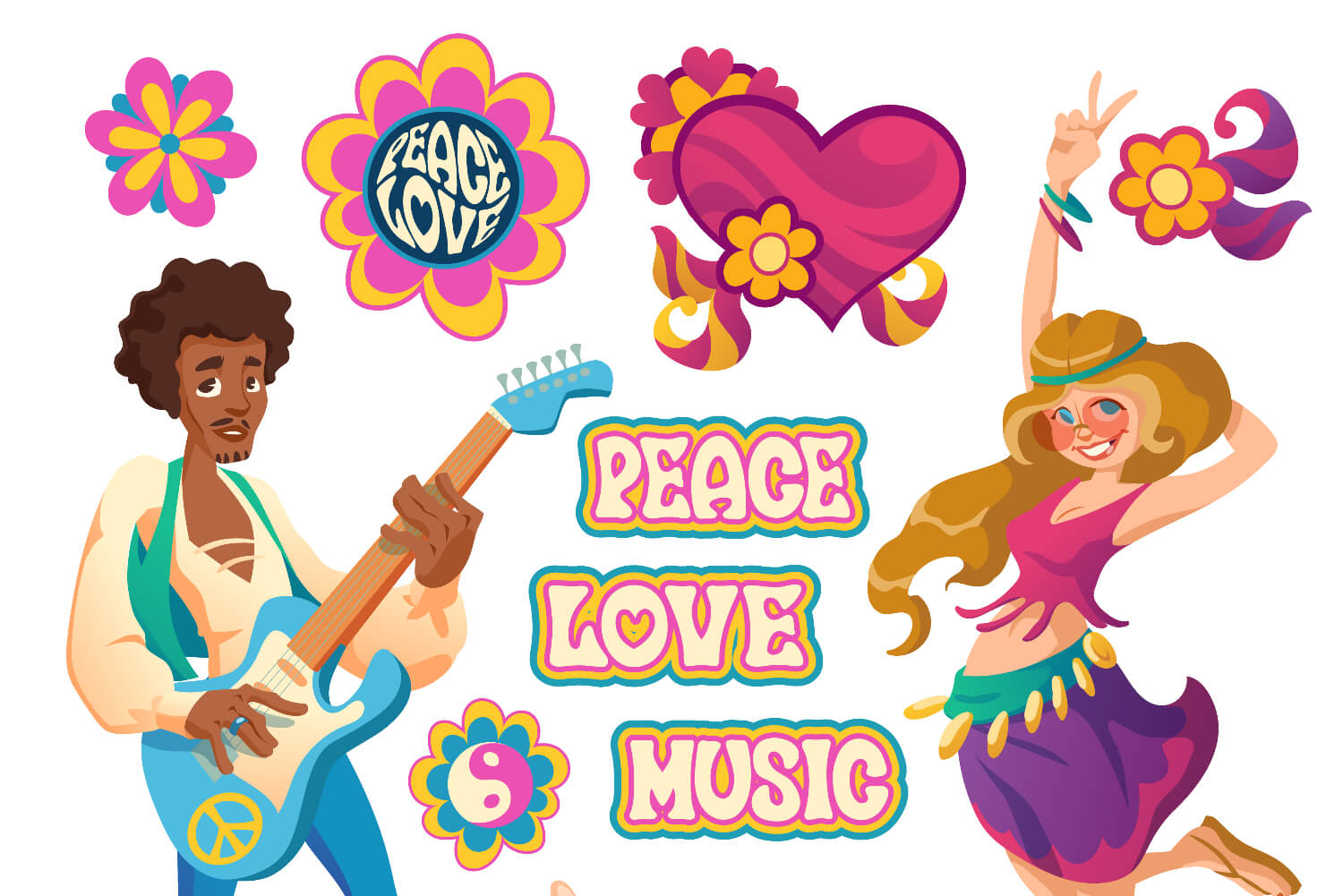
The styles and designs available in the modern cannabis-themed fashion industry are extensive. Several brands have made a name for themselves by producing weed-themed apparel, such as t-shirts with cannabis leaf graphics or caps with embroidered marijuana buds. Some businesses are more discreet about it, utilizing cannabis-related words and phrases in their branding or using designs influenced by cannabis's textures and colors.
The use of cannabis-themed accessories has also gained in popularity. Necklaces and bracelets with cannabis leaf pendants, as well as bags and backpacks with cannabis-inspired patterns, have risen in popularity in recent years.
Although cannabis-inspired clothing is becoming increasingly mainstream, some find it offensive. Others feel it fosters the "stoner" reputation and adds fuel to the fire of negative attitudes toward marijuana users. However, many view it as a way to normalize cannabis use by celebrating its culture.
The Use Of Cannabis In Social Gatherings And Festivals
In the last few years, the consumption of cannabis at social events and festivals of many kinds has grown increasingly frequent. This is particularly the case because many states have legalized the drug for recreational use. Cannabis use has become commonplace at various social gatherings and events, ranging from backyard barbecues to music festivals. Attendees frequently partake in shared experiences of cannabis consumption at these events.
The annual 4/20 celebrations that take place all over the world on the 20th of April are one of the most well-known examples of people using cannabis in the context of social gatherings. These gatherings, which frequently take the shape of outdoor festivals or concerts, are a celebration of the culture of cannabis and a chance for enthusiasts to get together and partake in the substance in an environment that is conducive to social interaction.

The use of cannabis is also widespread during music festivals, particularly those that showcase musical styles like reggae, hip-hop, and jam bands, all of which are frequently associated with the culture of cannabis use. Despite the fact that smoking cannabis is prohibited at many of the locations hosting music festivals, attendees often find ways to ingest the substance covertly, such as through the use of vaporizers or edibles.
Cannabis is a popular addition to various social gatherings, including music festivals and events celebrating 4/20, as well as other social gatherings, such as parties and barbecues. Some hosts even incorporate cannabis into the menu, providing guests with dishes and drinks that contain cannabis-infused ingredients.
In spite of the fact that partaking in cannabis use during events such as parties and celebrations can be a positive and pleasurable experience for many people, it is essential to keep in mind that the drug may have unfavorable effects on specific users. In addition, it is crucial to consume the substance responsibly and in appropriate quantities, as well as to observe the rules and regulations of the location or event you are attending.
Cannabis Consumption Etiquette And Rituals
The rituals and consumption etiquette around the use of cannabis have emerged alongside the drug's rising popularity. By adhering to these traditions, cannabis consumers can express their gratitude to the drug and its supporters.
Passing a joint or pipe clockwise is a frequent etiquette behavior when consuming cannabis socially. Historically, this practice has been traced back to Native American cultures, where it served as a unifying ritual. As a gesture of respect and brotherhood, passing to the left has become commonplace among today's cannabis consumers.
Sharing is also very recommended when consuming cannabis socially. It is common practice to pass around a joint or bowl or even a cannabis-infused food when smoking weed in a group. Cannabis consumers view sharing as bringing people together and fostering friendships.
The use of cannabis necessitates the development of specialized equipment, such as pipes, bongs, and vaporizers. Many collectors and admirers consider these things as though they were priceless pieces of art in their own right. As a sign of gratitude and respect for the skill and effort that went into their manufacture, it is traditional to clean and maintain such tools after each use.
Finally, cannabis use frequently occurs with a certain degree of awareness and purpose. For many cannabis consumers, the drug provides a means to a more mindful and inventive state of mind. Some people meditate or do other practices in preparation for using cannabis so that they can have a more profound and meaningful interaction with it.
The Impact Of Cannabis On Popular Culture And Media
Cannabis has had a profound impact on popular culture and the media, reshaping how people connect with and take part in the consumption of entertainment. Cannabis has become an intrinsic component of the current social climate as a result of its myriad effects on the creative industries, which include the film and television industries as well as the music and art worlds.
One of the most obvious ways in which cannabis has had an impact on popular culture and the media is through the way that it has been portrayed in movies and television shows. Cannabis has been featured prominently in a vast number of films and television shows, ranging from stoner comedies such as "Up in Smoke" by Cheech and Chong to more current successes such as "Pineapple Express" and "Broad City."
These portrayals have served to shape public opinions of cannabis and have led to the normalization of its usage in popular culture. In other words, cannabis has become more accepted due to these portrayals.
Cannabis has also had a significant impact on the music industry, as seen by the fact that numerous musicians have included songs and album artwork that make reference to the substance. Cannabis has been a recurrent topic of discussion in music for several decades, ranging from reggae pioneers like Bob Marley to contemporary rappers like Snoop Dogg and Wiz Khalifa.
Some musicians have even gone to the extreme of devoting an entire album to the substance, such as Dr. Dre did with his album The Chronic and Cypress Hill with their album Black Sunday.
The Evolution Of Cannabis Strains And Their Cultural Significance
Throughout human history, cannabis strains have undergone substantial change, with new types of plants continually being discovered and improved. As a result of this evolution, different strains of cannabis have become connected with various cultural movements and subcultures. This has had a massive impact on the cultural relevance of cannabis.
The classic Sativa-dominant strain of cannabis is one of the most well-known plant types and is frequently linked to the counterculture of the 1960s and 1970s when it was popular. The effects of this strain are noted for being energizing and uplifting, and they were frequently used to increase mood and energy.
One more well-liked type is the Indica-dominant variety, which is cultivated for the calming and sleep-inducing properties that it is famous for. This strain is frequently connected with the stoner subculture, and it has become well-known thanks to movies and television series that have portrayed it as the archetypal "chill out" strain.
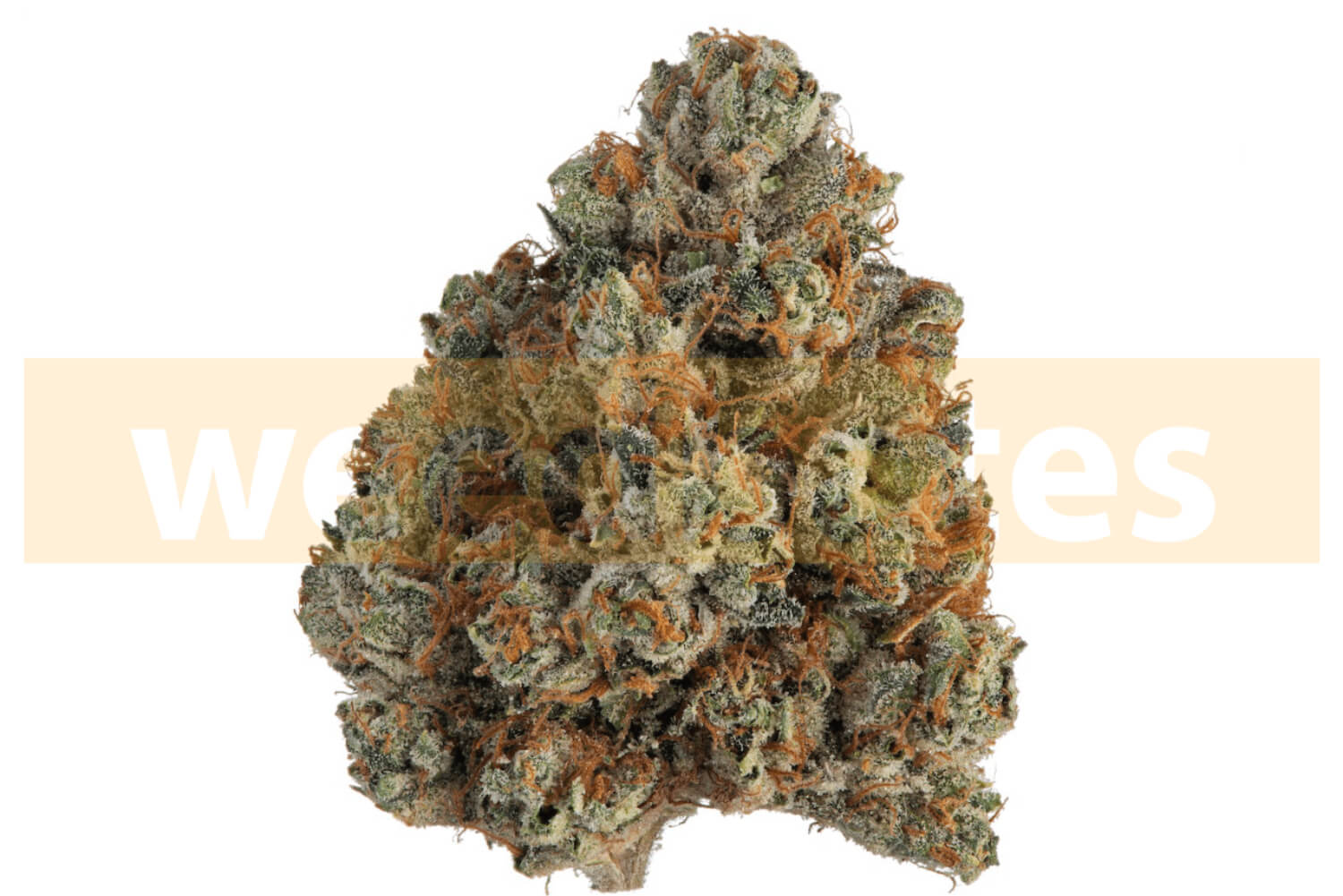
It is common practice to ingest Indica strains in the evening or just before going to bed because of their association with feelings of calm, relief from tension, and a relaxed way of life.
In recent years, hybrid strains have seen a rise in popularity. These strains are created by combining the greatest genetics of Sativa and Indica cannabis, resulting in distinctive and potent strains with various effects. The modern cannabis culture, which places a premium on experimentation, innovation, and a willingness to broaden one's horizons, has come to link these hybrid strains with its core ideals.
In general, the evolution of cannabis strains has substantially impacted their cultural importance. This has shaped the manner in which various subcultures and communities partake in the consumption of different strains, enjoy them, and place value on them.
It doesn't matter if you're a Sativa-loving hippie, an Indica-loving stoner, or a hybrid-loving modern cannabis enthusiast; the point is that there is a strain out there that will suit your preferences and lifestyle that will also help you connect with the rich cultural heritage of cannabis usage and appreciation.
The Rise Of Cannabis Tourism And Destination Spots
There has been a rise in the popularity of cannabis tourism since a growing number of states and nations are either legalizing or decriminalizing cannabis use. The rise of cannabis-friendly holiday spots and tours has made it possible for enthusiasts to explore the world of cannabis culture while also taking advantage of all the typical attractions that come along with traveling.
Amsterdam, which has a long history of being known as a city that takes a permissive stance toward cannabis use, is one of the most popular destinations for cannabis tourists.
There are a number of tours and events that focus on cannabis that visitors can participate in, such as the Cannabis Museum, the Hash Marihuana & Hemp Museum, and the Amsterdam Coffeeshop Tour. Additionally, the city's famous coffee shops provide visitors with the opportunity to try a variety of cannabis strains.
Several states in the United States, including California, Colorado, Oregon, and Washington, have become popular destinations for people interested in cannabis tourism. These states have made cannabis usage legal for both medical and recreational purposes, and they provide a wide variety of opportunities for people interested in cannabis, including cannabis-themed restaurants and events, as well as dispensaries and smoke shops. You can even have a chance to smoke weed here and have your wonderful smoking pot experience.
However, cannabis tourism is not restricted to only a few locations worldwide. Numerous tour operators provide excursions and activities centered on cannabis, many of which may be adapted to meet the specific requirements of particular vacationers. During these trips, participants might go to cannabis farms and dispensaries, can try cannabis of various strains, and gain insight into the cultural and historical context of cannabis consumption.
Cannabis tourism will likely continue to gain popularity as the cannabis business continues to develop and thrive in the years to come. There is a whole world of cannabis tourism just waiting to be discovered, and it doesn't matter if you are an experienced cannabis fan or merely inquisitive about this intriguing plant and the cultural significance it carries; the world of cannabis tourism is vast.
The Impact Of Cannabis On Cuisine And Dining Experiences
Cannabis has significantly impacted the world of cuisine and dining experiences, as chefs and foodies alike have begun to explore the unique flavors and effects of cannabis-infused dishes. The recent legalization of cannabis in a number of states and nations has opened up a whole new realm of culinary exploration, making it possible for professional chefs and home cooks alike to experiment with oils, butters, and other items that have been infused with cannabis.
A cannabis dinner party is one of the most common ways to consume food or drink that has been infused with cannabis. These events are frequently hosted by chefs or other food lovers who are enthusiastic about exploring the gastronomic potential of cannabis and who are keen to share their creations with others. These parties often consist of a multi-course meal that includes several different types of cannabis-infused foods and beverages.
.jpg?1681926200147)
Cannabis-infused meals can range from sweet snacks like brownies and cookies to savory dishes like pasta and pizza. Many chefs experiment with various flavor combinations and cooking methods to create cannabis-infused meals that are distinctive and delectable.
In addition to the culinary potential of cannabis, many individuals appreciate the calming and euphoric benefits of consuming dishes that contain cannabis. This can elevate the dining experience, making it more fun and memorable in the process.
Restaurants And Cafés Exclusively Dedicated To Cannabis Cuisine
Cannabis-infused dining experiences, however, are not restricted to merely being enjoyed at exclusive dinner parties. There are currently a lot of restaurants and cafés that sell food and drinks that have been infused with cannabis, and some of them are even exclusively dedicated to cannabis cuisine.
The eating experiences offered at these establishments are frequently one-of-a-kind and engaging, and the menus typically feature a wide variety of creative and delectable foods that use cannabis.
Cannabis has had a significant overall impact on cuisine and dining experiences, resulting in the opening of a whole new universe of culinary research and experimentation opportunities. Cannabis-infused dining experiences have undoubtedly become an essential part of the culinary world, offering a one-of-a-kind and unforgettable way to explore the flavors and effects of this fascinating plant.
Whether you are a food enthusiast, a cannabis lover, or simply curious about this exciting and evolving trend, there is no doubt that cannabis-infused dining experiences have become an essential part of the culinary world.
The Connection Between Cannabis And Spirituality Or Religion
The relationship between cannabis and spirituality or religion can be traced back thousands of years, with many ancient cultures including the plant in their spiritual and religious traditions. This connection can be traced back to the use of cannabis in religious rituals.
In the religion of Hinduism, for instance, cannabis is revered as a sacred plant because of its connection to the god Shiva, and it is often used in the rituals that are performed in honor of this divinity. Similarly, Rastafarianism considers cannabis to be a sacrament, which is employed to facilitate meditation and establish a relationship with the divine.
Cannabis has a long history of being linked to specific religious practices and broader concepts of spirituality and human development. A lot of people uses cannabis as a tool for meditation and introspection.
The plant's psychoactive properties serve to promote emotions of relaxation, creativity, and self-awareness, which is why so many people use cannabis in this way. Some individuals have even referred to cannabis as a "spirit plant," implying that it has the unique potential to connect people with their inner selves and the external world.
Cannabis has a long history of being used in religious and spiritual contexts; yet, because of the plant's legal position in many countries, the use of cannabis in such settings is frequently problematic. This is despite the fact that cannabis has been used in such settings for a very long time.
Consistent with the recent trends, a significant number of people continue to investigate the transformational and spiritual potential of cannabis, either as a component of a particular religious or spiritual tradition or simply as a means of engaging in personal investigation and development.
Cannabis Culture And 420 Friendly Nowadays
Today, cannabis culture and the concept of being 420-friendly are more visible and accepted than ever before. With the legalization of cannabis for both medical and recreational use in many parts of the world, the stigma surrounding the plant has begun to lift, and people are increasingly open about their use and appreciation of cannabis.
At the same time, the cannabis industry has exploded, with a wide variety of products and services catering to consumers who are interested in incorporating cannabis into their lives. From dispensaries and delivery services to cannabis-themed events and experiences, more opportunities exist for people to explore and celebrate the plant.
As cannabis culture has become more mainstream, so too has the concept of being 420-friendly. Today, being 420-friendly is often seen as signaling that one is open to and accepting of cannabis use. This can range from simply being willing to socialize with people who use cannabis to actively incorporating the plant into one's own lifestyle and personal identity.
Despite the growing acceptance of cannabis, however, there are still many challenges facing those who are interested in exploring and celebrating the plant. The legal status of cannabis remains a contentious issue in many parts of the world, with some countries and jurisdictions continuing to criminalize even the most minor cannabis-related offenses.
Additionally, many people still hold negative attitudes and stereotypes about those who use cannabis, which can create social and professional barriers for individuals who are open about their use.
Overall, however, the rise of cannabis culture and the concept of being 420-friendly represents an essential shift in attitudes toward the plant and those who use it. As more and more people become aware of the potential benefits of cannabis, it seems likely that the culture and community surrounding the plant will continue to grow and evolve, becoming an even more integral part of our social and cultural fabric.
The Bottom Line
The slang term "420 friendly" originally referred to cannabis consumers, but its meaning has since spread much beyond that scope. It has become a cultural phenomenon that can be found in music, cinema, and other kinds of popular culture all around the world.
Many individuals demonstrate that they are a part of the culture around cannabis by affixing stickers to their vehicles or donning clothing emblazoned with the 420 symbols to show that they are a part of this culture.
There are also social networks and dating apps that are oriented specifically toward people who have an interest in cannabis. Cannabis tourism is becoming increasingly popular as a way for people to broaden their knowledge of different cannabis strains and network with others with a similar interest in the drug.
The 420 subculture is being embraced by an increasing number of municipalities and states, as evidenced by the proliferation of festivals and other events centered on cannabis in these areas.
Disclaimer: This material is for informational purposes only and should not be relied on for legal, medical, financial, or any other form of professional advice.



